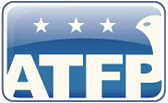Medical waste management is of great importance due to its infectious and hazardous nature that can cause undesirable effects on humans and the environment. The objective of this study was to analyze and evaluate the present status of medical waste management in the light of medical waste control regulations recommended by the WHO in Jenin district. A comprehensive field survey was conducted for three hospitals. Field visits and a questionnaire survey method were implemented to collect information regarding different medical waste management aspects, including medical waste generation, segregation and collection, storage, training and education, transportation, disposal, and safety of cleaning personnel. The results indicated that the average hazardous healthcare waste generation rate ranges from 0.54 to 1.82 kg/bed/day with a weighted average of 0.78 kg/bed/day.
There was no waste segregation of various types of healthcare wastes in all hospitals. All hospitals still use some of the unqualified staff for medical waste collection, and all of the hospitals do not have temporary storage areas. Additionally, 67.9% of cleaning personnel at the three hospitals have reported that they received training about healthcare waste handling; however, none of the hospitals have ongoing training and education. It was found that healthcare waste is finally disposed in a centralized sanitary landfill (Zahrat al Finjan) that has been constructed for domestic solid waste disposal and is not specialized for healthcare waste disposal. The management of Medical waste in Palestine was not given the proper attention. Still there are lacks of legislation and defined policy regarding this issue . The entire Medical waste generated is dumped within general waste. The results also suggested that there is need for sustained cooperation among all key actors (government, hospitals and waste managers) in implementing a safe and reliable medical waste management strategy, not only in legislation and policy formation but also particularly in its monitoring and enforcement. This can be achieved through the cooperation between the Ministry of Health, Environmental Quality Authority, Ministry of Local Government, and Non Governmental Organizations working in related fields. Additional remediation measures are proposed to tackle the problematic areas of medical waste management in Jenin district hospitals by proposing some recommendations that will ensure that potential health and environmental risks of medical waste are minimized.
1.1 Introductory Remarks
Hospitals are health institutions providing patient care services. It is the duty of hospitals and health care establishments to look after the public health. This may directly be through patient care or indirectly by ensuring a clean, healthy environment for their employees and the community. In the process of health care, waste is generated which usually includes sharps, human tissues or body parts and other infectious materials (Patil and Pokhrel, 2004).
Hospital is one of the complex institutions which is frequented by people from every walk of life in the society without any distinction between age, sex, race and religion. This is over and above the normal inhabitants of hospital i.e. patients and staff. All of them produce waste which is increasing in its amount and type due to advances in scientific knowledge and is creating its impact.
The hospital waste, in addition to the risk for patients and personnel who handle these wastes poses a threat to public health and environment. Handling, segregation, mutilation, disinfection, storage, transportation and final disposal are vital steps for safe and scientific management of biomedical waste in any establishment. The key to minimization and effective management of biomedical waste is segregation (separation) and 3 identification of the waste. The most appropriate way of identifying the categories of biomedical waste is by sorting the waste into color coded plastic bags or containers (Rao et al., 2004).
To download the full report please click below:
| Attachment | Size |
|---|---|
| 5171882.pdf | 936.86 KB |
An-Najah National University – Faculty of Graduate Studies - August 11, 2009 - Back to Resources Page
Did we miss something?
Click here to suggest a state building resource to be added to our fast-growing archive!
















